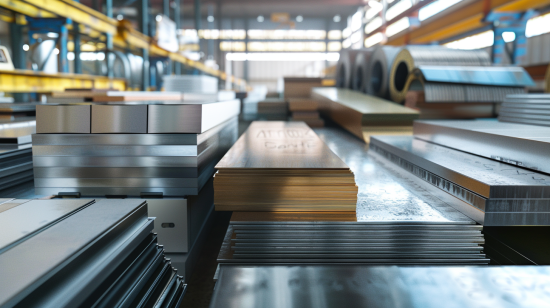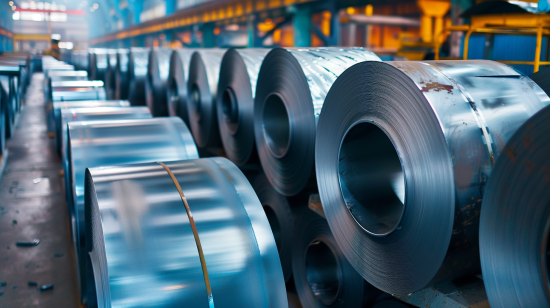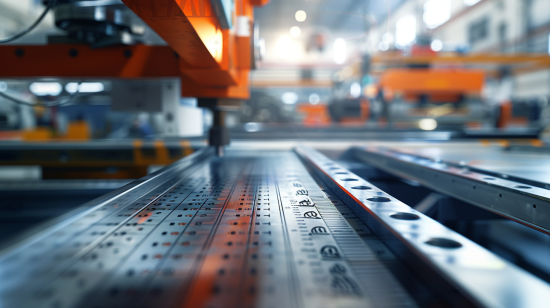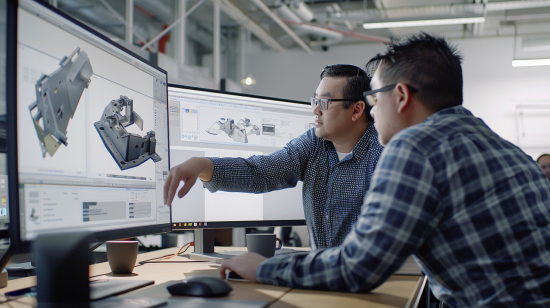Choosing the right material for your project can be overwhelming. You have to balance strength, weight, cost, and machinability. Not all materials are created equal, and choosing the wrong one can cost you more money and make you less efficient. Let’s talk about the strongest and weakest materials we offer and how they will impact your project.
Material matters in every project. The strongest materials, like carbon fiber and titanium, perform incredibly well. Weaker materials, like HDPE and copper, have their place. Knowing the properties of these materials and their cost helps you make better decisions for your project.
Remember, the strongest material isn’t always the best material. Sometimes, a material that is “strong enough” is better because it’s lighter or cheaper. Knowing how to measure material strength and understand different material properties can save you time and money. Let’s talk about the different materials and when you would use them.

What are the strongest materials for sheet metal manufacturing?
Carbon Fiber
Carbon fiber has an extremely high strength-to-weight ratio. It’s lightweight, but incredibly strong. It’s used in aerospace, automotive, and sporting goods industries. It’s great for parts that need to be strong but also light, such as aircraft parts or high-performance car parts. It’s more expensive, but in the right application, it’s a fantastic material.
Titanium (Grade 5)
Titanium has the strength of high-end steels but is much lighter. It’s used in aerospace, medical, and marine applications. It’s also great because it doesn’t corrode, which makes it excellent for aircraft parts and surgical implants. It’s more expensive, but the properties of titanium often justify the cost.
Stainless Steel (316/316L)
Stainless steel 316/316L is known for its high tensile strength and superior corrosion resistance. It’s used in harsh environments, such as marine and chemical processing applications. It’s great for marine fittings and chemical tanks because it’s so durable and doesn’t rust.
Inconel (625)
Inconel 625 is incredibly strong and can withstand extreme temperatures. It’s used in aerospace and chemical plant applications. Jet engine parts and chemical processing equipment benefit greatly from Inconel because it can take the heat and abuse.
AR500 Steel
AR500 steel is incredibly strong and resistant to impact and wear. It’s used in high-stress industrial and defense applications, like armor plating or heavy-duty industrial equipment. It’s so durable that it can withstand almost anything.
4130 Chromoly Steel
4130 Chromoly steel is stronger than mild steel and almost as strong as titanium, but it’s much less expensive. It’s used in structural components and aircraft parts where high strength at a lower cost is important. It’s a great material because it’s strong, but not too expensive.
7075 Aluminum
7075 aluminum is nearly twice as strong as 6061 aluminum, but only about 50% more expensive. It’s used in aerospace and military applications where high strength and lightweight are important. By designing parts to be thinner, the overall cost can be kept under control.

What are the weakest materials for sheet metal manufacturing?
HDPE (High-Density Polyethylene)
HDPE is a tough, durable plastic, but it’s not as strong as metal. It’s used in consumer goods, piping, and automotive parts like fuel tanks and plastic bottles. While not strong, it’s tough and easy to work with in the right applications.
UHMW Polyethylene
UHMW polyethylene is impact-resistant and self-lubricating, but it’s not as strong as metal. It’s used in low-stress mechanical parts and wear strips for conveyor belts and sliding surfaces. It’s not strong, but it’s very durable in low-stress environments.
Copper (C110)
Copper conducts electricity well, but it’s not very strong. It’s used in electrical and thermal applications like electrical connectors and heat exchangers. It’s not strong, but it has unique properties that make it valuable in these applications.
Aluminum (1100-H14)
Aluminum 1100-H14 is very ductile and has excellent corrosion resistance. It’s not very strong, but it’s used in lightweight and decorative applications like signs and lightweight panels. It’s easy to form and won’t corrode, so it’s great in non-structural roles.
Brass (Copper Alloy 260)
Brass is corrosion resistant but not very strong. It’s used in decorative and low-stress applications like architectural trim and musical instruments. It’s not strong, but it looks great and is easy to machine, so it’s used in these applications.
Cork
Cork is not strong and compresses easily. It’s used in applications that need insulation and cushion, like bottle stoppers and bulletin boards. It’s not strong, but it has unique properties that make it valuable in certain situations.

How does material cost impact selection?
Cost is the second most important factor when choosing a material, right behind weight. While stronger materials can be more expensive, there are alternatives that save you a lot of money without giving up performance.
4130 Chromoly Steel
4130 Chromoly steel is stronger than mild steel and almost as strong as titanium, but it’s much cheaper. It’s used in structural components and aircraft parts where you need high strength but can’t afford the expense of titanium. It’s a great material because it’s strong but not too expensive.
7075 Aluminum
7075 aluminum is almost twice as strong as 6061 aluminum, but it’s only about 50% more expensive. It’s used in aerospace and military applications where you need high strength and lightweight. By designing parts to be thinner, the overall cost can be kept under control.
G10/FR4
G10/FR4 is a composite material that’s stronger than Linen Micarta. It’s used in electrical insulation and mechanical parts because it’s stronger and costs about the same. If you need even stronger material, you can move up to carbon fiber.
Total Cost Considerations
The cost of the material is only part of the total cost. The complexity of the design, how long it takes to cut the parts, and how many parts you get all factor into the total cost. If you can buy a lot of parts at once, the cost per part can go down. Don’t forget to think about these factors when budgeting for a project.

When does material thickness matter?
The Relationship Between Thickness and Strength
For most materials, strength isn’t a factor of thickness. However, composites have mechanical properties that change with direction. For example, Aluminum Composite Material (ACM) changes strength with the thickness of the core, which affects the overall strength of the panel.
Examples of Thickness-Dependent Materials
• AR500 Steel: The thickness of AR500 steel changes the impact resistance, making it great for armor plating and industrial equipment.
• ACM: The thickness of the core changes the strength of the panel, which is critical in applications where you need a specific strength-to-weight ratio.

Premium available services
1. Design and Engineering Support
• Design for Manufacturability (DFM): Our engineers work with you to make sure your designs are practical and cost-effective to manufacture. This includes picking the right material, finding the right process, and testing prototypes.
• Material Recommendations: Based on what you’re making, we can tell you which materials are best for balancing performance, cost, and manufacturability.
• Optimization: We help you make your designs better so you don’t waste material, your parts work better, and you spend less money. We help you go from prototype to production.
2. Prototyping and Small Batch Production
• Rapid Prototyping: We use 3D printing and laser cutting to make prototypes so you can test your parts before you make them for real.
• Small Batch Customization: We make a few parts for you, which is perfect for testing the market or making parts for special applications without making a lot of parts.
3. Cutting and Machining
• Laser Cutting: Laser cutting makes super precise parts with really nice edges. It’s great for prototypes or making a lot of parts.
• CNC Machining: CNC machining makes really precise parts that are the same every time. This is really important for parts with a lot of detail and specific measurements.
4. Bending
Bending is super important in sheet metal fabrication. We use really good machines to bend your parts so they are perfect.
• Materials Suitable for Bending: We bend strong stuff like 4130 Chromoly, Grade 2 Titanium, and 316 Stainless Steel because they can be bent without breaking. Polycarbonate is the only non-metal material we bend because it’s flexible and great for making cool stuff.
• Applications: We make boxes, brackets, and frames. They are used in cars, planes, and electronics.
5. Welding and Assembly
Welding and assembly are important for making parts that are strong and work well together.
• Welding: We weld using MIG, TIG, and spot welding for various materials and thicknesses. Welding is important for making parts that need to be strong in construction, cars, and equipment.
• Assembly: We put parts together using rivets, screws, and bolts. This makes sure that your parts fit together and are ready to use right away.
6. Tapping
Tapping involves making threads in a part so you can screw things together. This is important for parts that need nuts and bolts.
• Strong Materials for Tapping: We like to tap 7075 Aluminum because it’s strong. We can also tap softer stuff like Delrin and HDPE, but the threads are weaker.
• Considerations: You need to pick a material that is easy to tap and has strong threads for your application.
7. Hardware Installation
When your part is too thin to tap, we can put hardware in it. This means we squish a steel part into a hole to give you a good place to screw in a bolt.
• Best Materials: We like to put hardware in parts that are not too hard or too soft. If a part is too hard, the steel won’t grab it. If it’s too soft, the steel won’t hold it.
• Examples: We use this in control panels, brackets, and other parts that need a good place to screw something in.
8. Surface Treatments and Finishing
We can make your parts look good and work right by doing things to the outside of them. We offer lots of options to make sure your parts look great and work well.
• Anodizing: We make aluminum parts stronger and last longer by anodizing them. We have different types of anodizing, with 7075 being the best and 5052 being the worst.
• Powder Coating: We make parts look good and last a long time by powder coating them. We put this on parts that are outside or in cars because it makes them last longer.
• Zinc Plating: We make parts look good and not rust by plating them with zinc. We can do this on 4130 Chromoly and mild steel. This is used on screws, nuts, and pretty parts.
• More Plating: We can also plate parts with nickel and chrome. This makes them look good and last a long time.
• Painting: We can paint your parts any color you want. This makes them look good and last a long time.
• Polishing and Grinding: We can make your parts look good and smooth by polishing and grinding them.

Specialized Considerations
Material Availability
Premium offers a lot of different materials you can use, from the really strong stuff like AR500 to the weaker stuff like HDPE and cork. We have over 165 materials in stock, so you can find the right one for your project.
Design and Optimization
When you’re choosing a material, you also need to think about how you’re going to use it. For example, if you’re using 7075 Aluminum, you can make your parts thinner and still have them be strong, which saves you money. If you’re using 4130 Chromoly, you need to know how it’s going to be machined and finished to make sure you get the best parts at the best price.

Conclusion
you need to balance strength, weight, cost, and how the material is made when you’re choosing a material for your parts. The strong stuff like carbon fiber and titanium works really well, and the weak stuff like HDPE and copper is good for certain jobs. If you know how the material works and how it’s going to be used, you can make great parts.
When you work with a good supplier like us, we can help you pick the right materials and get the right parts made. Whether you need really strong stuff or something that doesn’t cost a lot, we can help you get it done.

